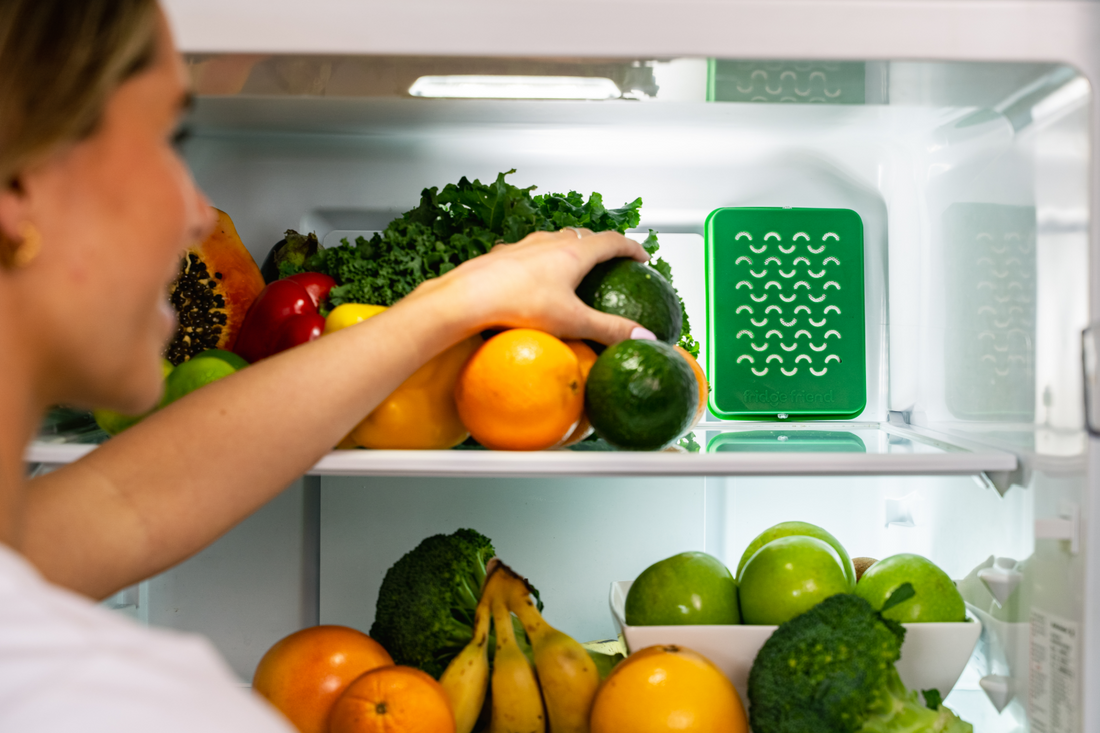These fresh produce storage tips will save you money and reduce food waste.
It can be tempting to just throw everything into the veggie drawer, but taking care to organise your fridge will keep your produce healthy and fresh for much longer.
While a Fridge Friend is a great way to increase the shelf life of your produce by adsorbing ethylene gas, and reducing airborne bacteria, mould and odours, certain produce will benefit from ethylene control more than others. Temperature also plays a vital role in the shelf-life of produce, so it’s important to get the temperature right.
It is also essential to be aware of the quality of the produce you buy. This is because overripe or old produce has less shelf life than fresh, good-quality produce.
What is ethlyene gas and why should I care?
Ethylene gas is a naturally occurring hormone that fruits and vegetables produce as they ripen. The gas causes the fruit or vegetable to ripen faster, but some fruits and vegetables are more sensitive to it than others.
As ethylene accumulates in the surrounding air it can lead to changes in the texture, colour and flavour of ethylene-sensitive vegetables and fruits, including causing them to become limp, wilted, or overripe. This is one of the main benefits of having a Fridge Friend in your fridge, as it's proven to absorb up to 79% of ethylene gas.
As a rule of thumb, optimal storage includes separating high ethylene-producing and ethylene-sensitive produce.
Below is a list of common high-ethylene producers and a range of ethylene-sensitive produce (as you’ll see some are both high-ethylene producers and highly sensitive to it).

Storage recommendations
We’ve put together the below fruit and vegetable storage guide to help you make the most out of your Fridge Friend:



Temperature is an important consideration because some produce is best kept out of the fridge altogether, as cold temperatures can cause them to rot or lose their flavour, while others are ideally stored in the fridge at all times. It's no wonder there's confusion about how to best store produce!
Tropical fruits, like bananas, mangoes and pineapples, fare best at room temperature, but once ripe, they can be stored in the fridge.
Buy quality produce
The quality of the produce when you buy it is also essential to consider. This is because produce that is already overripe, damaged or infected may already be toward the end of its shelf life as opposed to fresher, better-quality produce.
If storing large amounts of fruit, remove overripe and injured fruit regularly as these will trigger ripening and subsequent aging in the remaining fruit.
Just a final point: our food storage guideline is here to help you keep your food fresh and safe. Remember to always keep things clean and follow good food safety practices. Trust your instincts when it comes to freshness and safety, and if in doubt, it's better to toss it out!

